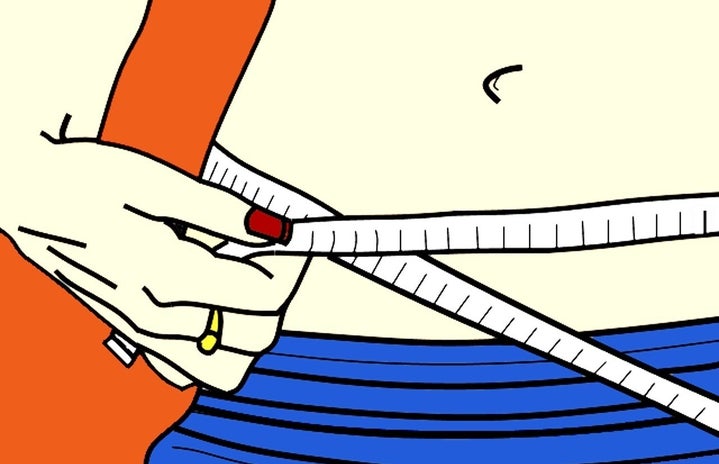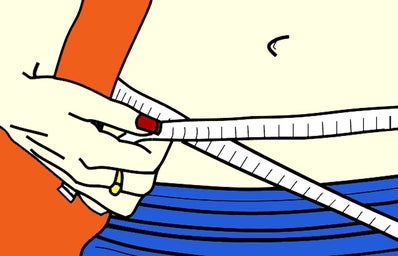The year 2022 has arrived, and with a new year comes New Year resolutions! It’s a time for improvement and gratitude for all of life’s roller coasters. For many, this is a time to reflect on their accomplishments and create year-long goals. But unfortunately, one of the most popular resolutions revolves around weight loss.
Why Are Weight Loss Resolutions Harmful?
Glorifying and marketing weight loss as a life-changing “decision” promotes the stigma of being fat and increases eating disorders in adolescents and adults. Because thinness has been fed to us as the most critical aspect of our lives, many will go to harmful lengths to obtain a ” supposed ” body that gives us happiness and brings love. Such lengths include starving oneself (anorexia), eating and then forcing oneself to throw up (bulimia), spending hours at the gym to the point of physical exhaustion, smoking, or drinking to suppress one’s hunger, among many others. But it doesn’t stop there. Our culture’s obsession with thinness impacts the mental health of millions and leaves a long road to recovery.
How Are Weight Loss Resolutions Connected to Fatphobia?
American beauty and social standards preference people, particularly women, in thin bodies. This preference encourages people who don’t have thin or “straight-sized” bodies to make weight loss their main goal in life to attain a socially accepted “beautiful” body. Unfortunately, aside from the fact that bodies are well equipped to keep weight at homeostasis, the intense pursuit of a thin body does more harm than good.
But it’s no surprise that millions of people make weight loss and ‘body goals’ their New Year’s resolutions. For decades the entertainment industry has portrayed thin women as the epitome of physical attractiveness. During the late 1900s, the poster child for female love interests was coded as white, blonde, and thin; when movies shifted to “empower” women as the main characters, there was, and continues to be, a lack of diversity in regards as to what kind of woman can be empowered. In movies that are supposed to inspire women to become better versions of themselves, there is a clear emphasis on transforming their bodies as a revenge tactic for being rejected by a man. (Examples: Just Friends, Insatiable, Brittany Runs A Marathon, Bridget Jones Diary.)
Aside from the movies and tv shows that perpetuate an unhealthy relationship between oneself and their body, modeling and fashion shows contribute to society’s warped idea of a worthy and healthy woman based on their body size. The most prominent example is Victoria’s Secret fashion show, which displays thin women as sexually attractive beings (according to the male gaze) and purposefully excludes plus-size models, insinuating that fat women cannot be sexually attractive. To date, there have been considerable strides towards a more size-inclusive modeling world, but the harm is done, and millions of women have consumed a fatphobic view of the world and, by secondary effect, internalized those views onto themselves.
Fat people in movies and shows are often used for comedic relief, but the humor is strictly contained to their fatness. Meaning plus-size actors are hired to explicitly make fun of their size. Furthermore, fat women are rarely, if ever, the love interest in romantic comedies (unless she loses weight by the end of the movie) because it is believed that plus-size women cannot be loved due to their weight. These messages coupled with January’s increased amount of ads for weight, such as appetite-suppressing lollipops, detox teas, and waist trainers, and the reduced rates for gym memberships create a societal peer pressure to change one’s body, and it masquerades as a New Year’s resolution for a “healthier and happier” you.
Relationship Between Weight and Health
Fatphobic people will argue that if plus-size individuals show their life flourishing on social media, it will promote obesity. (And if that statement made you think, “I’m not fatphobic,” then I ask you to continue reading this section with an open mind.) The relationship between weight and health intensified after the creation of the body mass index formula, otherwise known as BMI. The formula was introduced in the early 19th century by a mathematician named Lambert Adolphe Jacques Quetelet, not a physician. Its original purpose was to give a quick measure of obesity in the general population to aid the government in distributing resources. Quetelet explicitly stated that it could not and should not be used to calculate the amount of fatness in an individual. Health organizations, however, ignored his advice and have since used the BMI to calculate how healthy a person is in regards to their weight, height, and fat proportions. It’s also important to note that the formula was created using white male participants, which excludes the genetic differences between males and females and individuals of other races; it makes Black and Latine folk disproportionately categorized as overweight and obese. To add to this disregard, people in larger bodies are often ignored when seeking medical help for non-weight-related issues. As a result, many are not taken seriously when they advocate for themselves at doctor’s offices and are told that their weight is the reason for their medical problems. On the other hand, people who are thin or have “straight-size” bodies do not face the same discrimination; their medical issues are taken seriously, which is an example of thin privilege. Note: this is a comparison between fat and thin bodies; if we add an intersectional lens, Black and Brown women are rarely believed in their pain, primarily if white health professionals are servicing them.
Aside from being an inaccessible capitalistic institution, the healthcare industry refuses to examine health through a holistic approach. Health at Every Size (HAES) is an approach to public health that seeks to deemphasize weight loss as a health goal and reduce stigma, medical, and social barriers to people who have plus-size bodies. It’s a method to remind the public and current health professionals that one cannot know someone’s health by merely looking at their body; it also affirms that being fat does not equal being unhealthy.
Key Takeaways:
- Fat people are not morally failing.
- A person can be fat and healthy.
- Fat people living their best lives are not promoting obesity.
Diet Culture as Meritocracy
American culture thrives off of diet culture. Diet culture is a “collective set of social expectations telling us that there’s one way to be and one way to look and one way to eat and that we are a better person, we are a more worthy person if our bodies are a certain way” (NPR). Similar to the belief that America is a meritocracy, diet culture blames individuals for being plus size rather than examining social institutions’ deliberate distribution of resources to wealthy neighborhoods. As a result, those who have access (transportation, money, and multiple stores) to “healthy” foods are more likely to consume them. However, the lack of store variety in low-income and minority neighborhoods forces families and individuals to buy what’s available and affordable. For example, if I’m a minimum wage earner and have to choose between a $1 sandwich from McDonald’s and a $10 salad from Starbucks, I will choose the latter due to my financial circumstances. (Note: I choose to compare a sandwich and a salad because of the belief that one is healthier than the other.) Creating gyms in areas that don’t offer “healthy” food choices isn’t the solution. For one, gyms aren’t free, which means it is an added expense (a privilege) to afford a gym membership, and two, gyms aren’t accessible to everybody (neurodivergent individuals, disabled individuals, and individuals without transportation or time).
The Myth of Healthy Foods
Our country’s fixation on labeling foods as “healthy” or “unhealthy” contributes to a binary of moral rights or wrongs and creates a belief that a person is morally right or wrong based on the foods they consume. Foods do not hold any moral value, and the idea of “healthy” foods is a myth. A salad is not healthier than a sandwich; it simply has different nutrients. A “healthy” lifestyle is a fancy way to say dieting by consuming perceived “healthy” foods. For our bodies to function and feel good, they need an array of nutrients, which can be consumed through “healthy” and “unhealthy” foods. The truth that weight loss companies don’t want you to know is that diets are made to fail. It puts human beings into a perverse cycle of restriction and then binging foods, leading to another attempt at dieting. The fact that diets were made to fail is why weight loss companies are multi-billion dollar industries – they depend on the restriction and binge cycle to make money. Diets don’t work because they aren’t sustainable (to most) individuals (including Keto, Paleo, low-carb, low-fat, Atkins, and HCG, among other diets). Despite the advertisements, dieting has never been about becoming healthier; on the contrary, it pressures people to idolize a thin body without regard to health.
Does This Mean It’s Wrong to Want to Change the way I Eat or Exercise?
No. But there’s a difference between restricting yourself to certain foods and exercising as a form of punishment for eating (intentional weight loss) versus eating various foods and moving your body to feel joy (weight loss as a secondary effect). Instead of making weightloss your New Year’s resolution, try these goals instead:
- I want to try X foods this year
- I want to move my body more
- I want to learn a new dance
- I want to be more flexible
- I want to learn how to do a cartwheel
- I want to be able to do the splits
- I want to feel more confident in my body
- I want to wear what makes brings me joy


